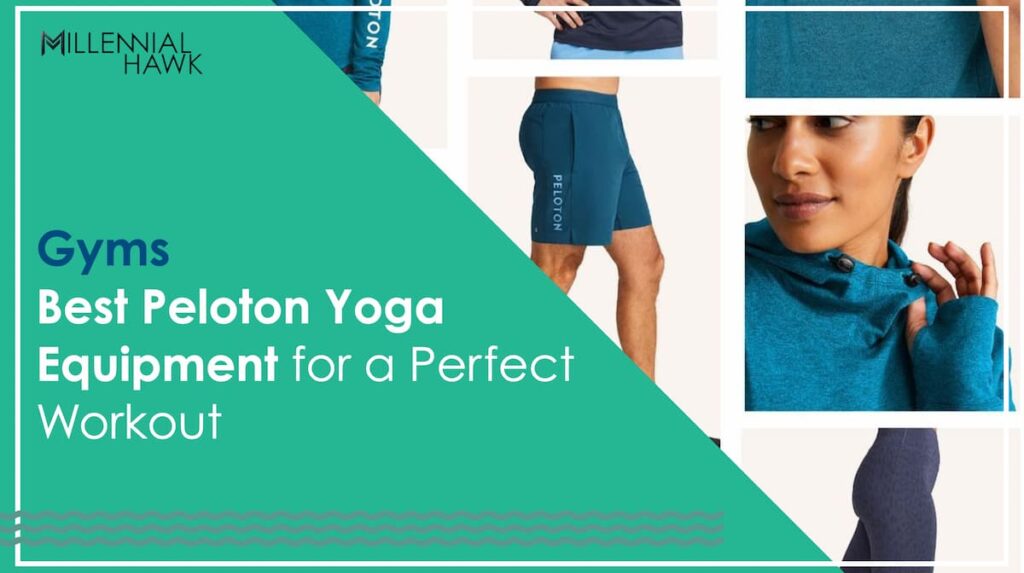
Yoga is a popular way to stay fit and healthy, and Peloton offers a range of equipment to help you get the most out of your practice. If you’re looking to enhance your yoga routine, investing in the right accessories can make all the difference. In this article, we’ll be exploring the best Peloton yoga equipment to help you take your practice to the next level.
When picking out gear for Peloton yoga, think about the type of yoga you’re into. Peloton’s got a bunch of different classes, and each one might need its stuff like mats, blocks, and straps, all made for specific yoga styles. So, whether you’re into yoga conditioning, chair yoga, or yoga for runners, there’s Peloton equipment that’ll fit your needs.
I understand the importance of having the right equipment for your Peloton yoga practice. That’s why I’ve researched and tested various products to bring you the best Peloton yoga accessories on the market. Whether you’re a beginner or a seasoned yogi, our roundup has something for everyone. From mats to blocks to straps, we’ve got you covered. So, without further ado, let’s dive into our top picks for the best Peloton yoga equipment.
Millennial Hawk is a reader-supported platform. Purchases made through our links may earn us a small commission at no extra cost to you.
1. Peloton Yoga Block
BEST Peloton yoga block for for back pain
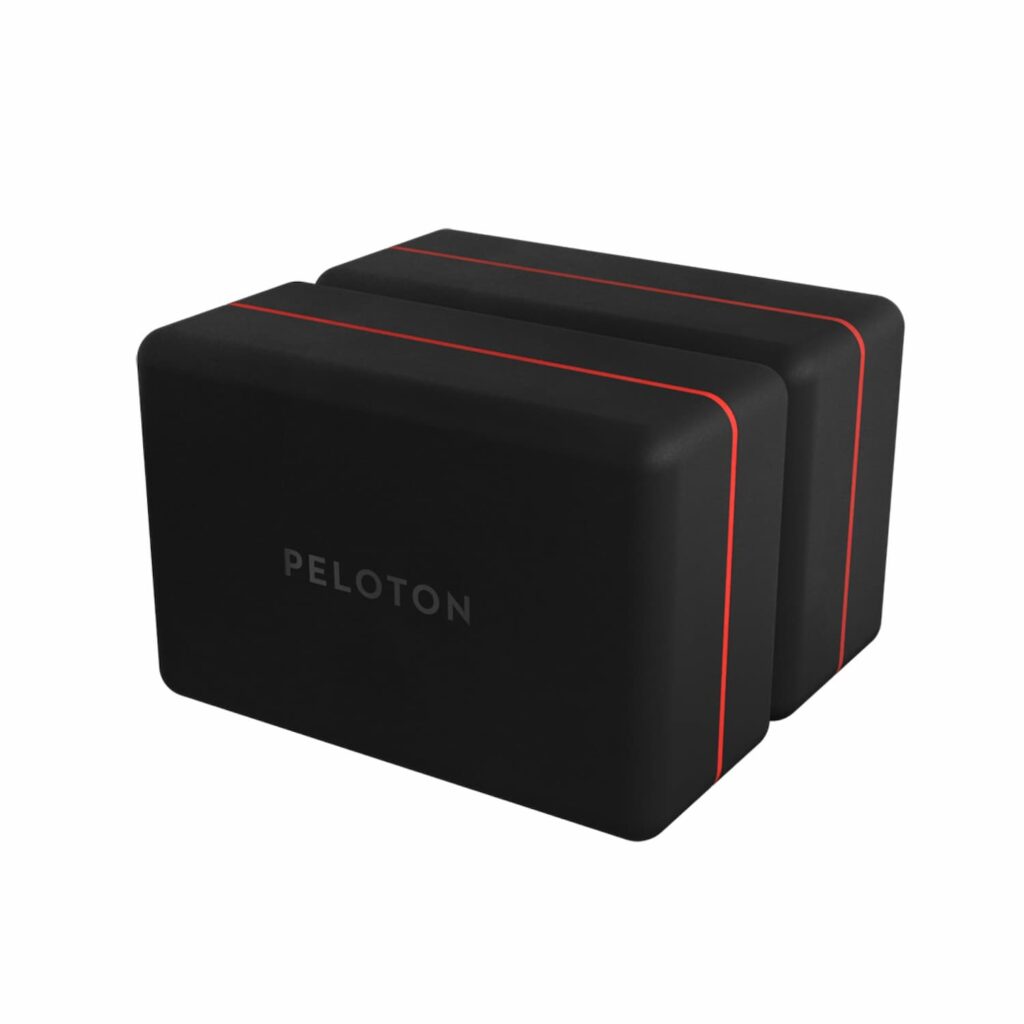
| Pros |
|---|
| The Peloton Yoga Block is made of EVA foam, making it sturdy and durable. |
| It provides extra lift and balance when reaching for new or challenging poses. |
| The block comes in sets of two and provides three different height options. |
| Cons |
|---|
| The Peloton Yoga Block is a bit pricier than other yoga blocks on the market. |
| The block may have a slight chemical smell when first opened. |
If you’re in search of a reliable yoga block, the Peloton Yoga Block is an excellent choice. However, some users may find the block too firm. I have personally used the Peloton Yoga Block in my yoga practice and found it to be a valuable addition to our routine. Made from EVA foam, this block offers sturdiness and durability, able to withstand frequent use. With three different height options, it caters to both beginners and advanced yogis. The curved edges and corners provide a comfortable grip from any side, and its lightweight design makes it portable for use almost anywhere.
One of the best things about the Peloton Yoga Block is that it can be used for a variety of core, upper-, and lower-body workouts. It’s also a great prop for beginner yoga, as it can help safely modify poses to suit your level of flexibility or to hold a pose longer without strain. As you advance, you can use the block to help you highlight different physical sensations and deepen your stretch to improve your flexibility.
Overall, I highly recommend the Peloton Yoga Block for anyone looking for a sturdy and versatile yoga block. It’s a bit pricier than other yoga blocks on the market, but the quality and durability make it worth the investment.
2. Peloton Reversible Workout Mat
BEST Peloton yoga mat for beginners
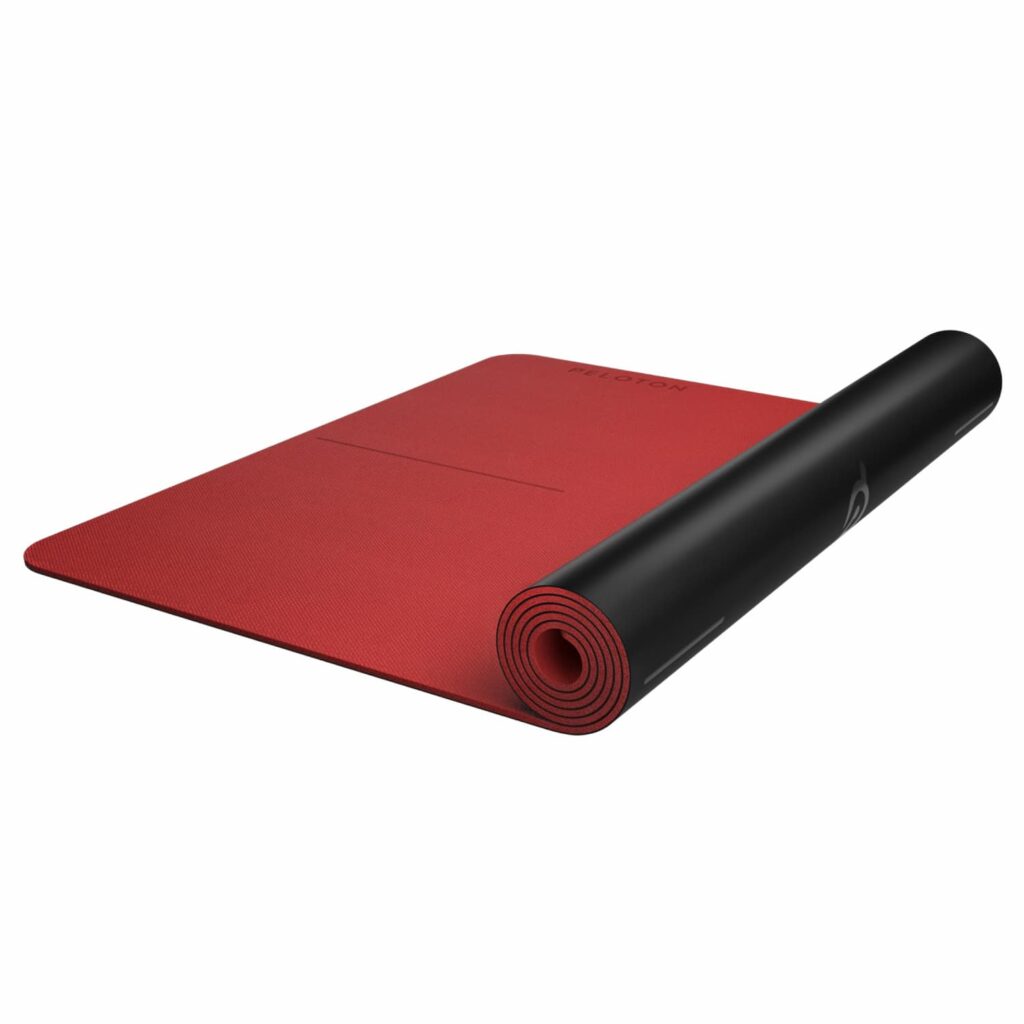
| Pros |
|---|
| With a premium, heavy-duty design, this mat resists tears and scratches even during your toughest workouts. |
| The mat is stable and prevents skidding, so you can focus on your high-intensity workouts without worrying about slipping. |
| The mat is versatile with one side providing superior grip and the other side acting as a more absorbent yoga mat. |
| Cons |
|---|
| The natural rubber material used in the mat has a distinctive smell, which may take some time to fade away. |
| The mat may have a thin layer of dust from the manufacturing process, which requires cleaning before use. |
If you’re looking for a durable and versatile workout mat, the Peloton Reversible Workout Mat is definitely worth considering. I’ve been using the Peloton Reversible Workout Mat for a few weeks now and we’re impressed with its durability. The mat is thick and heavy, which makes it feel sturdy and provides a stable surface for our workouts. We’ve used it for yoga, strength training, and high-intensity interval training, and it has held up well.
One of the things we like about this mat is its versatility. The superior grip on one side is perfect for high-intensity workouts, while the more absorbent yoga mat side is great for yoga and stretching. The mat also has simple horizontal and vertical lines to help keep us centered during our entire workout.
While the mat is heavy and thick, it’s not difficult to move around. We appreciate that it’s easy to clean, and the size fits our workout space perfectly. However, the natural rubber material does have a distinctive smell, which may take some time to fade away. Additionally, the mat may not roll up into a compact size easily, which may be a concern if you have limited storage space.
Overall, if you’re looking for a durable and versatile workout mat, the Peloton Reversible Workout Mat is definitely worth considering.
3. Manduka PRO Black 71″ x 26″
BEST Peloton yoga mat for runners
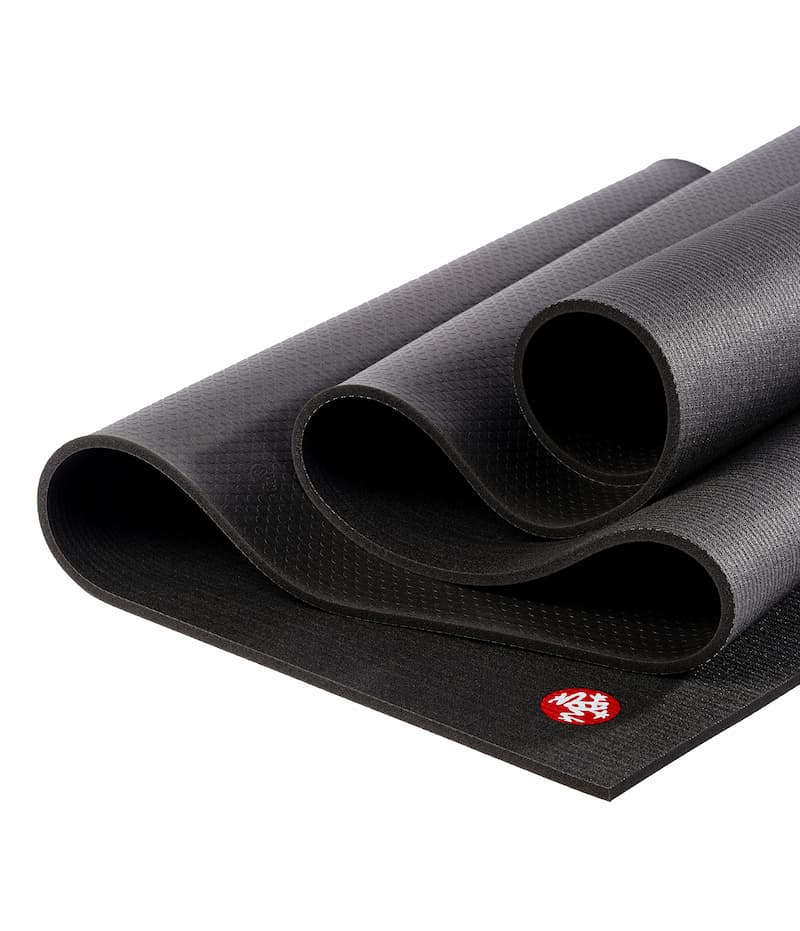
| Pros |
|---|
| The ultra-dense 6mm cushioning provides unmatched comfort and cushioning. |
| The mat is certified safe for human contact by OEKO-TEX, a material certification agency in Europe for the textile industry. |
| The closed-cell material helps keep out moisture, making it easy to clean. |
| Cons |
|---|
| The mat is relatively heavy, which can make it difficult to transport. |
| The non-slip grip can take some time to improve with use. |
If you’re a runner and looking for a yoga mat that provides superior support, stability, and joint protection, the Manduka PRO Black 71″ x 26″ mat is an excellent choice. We highly recommend the Manduka PRO Black 71″ x 26″ mat for anyone looking for a high-quality yoga mat that will last a lifetime. The ultra-dense cushioning provides superior support and comfort, while the closed-cell material ensures that the mat stays clean and hygienic.
The mat is also certified safe for human contact, making it a great choice for anyone who is concerned about the environmental impact of their yoga practice. While the mat may be more expensive than other options on the market, we believe that the quality and durability of the Manduka PRO Black 71″ x 26″ mat make it well worth the investment.
In conclusion, if you’re looking for a yoga mat that will provide unmatched comfort and cushioning, the Manduka PRO Black 71″ x 26″ mat is an excellent choice. With its superior support and durability, this mat is sure to become a staple of your yoga practice for years to come.
4. Peloton Yoga Strap
BEST Peloton Yoga Strap for cyclists
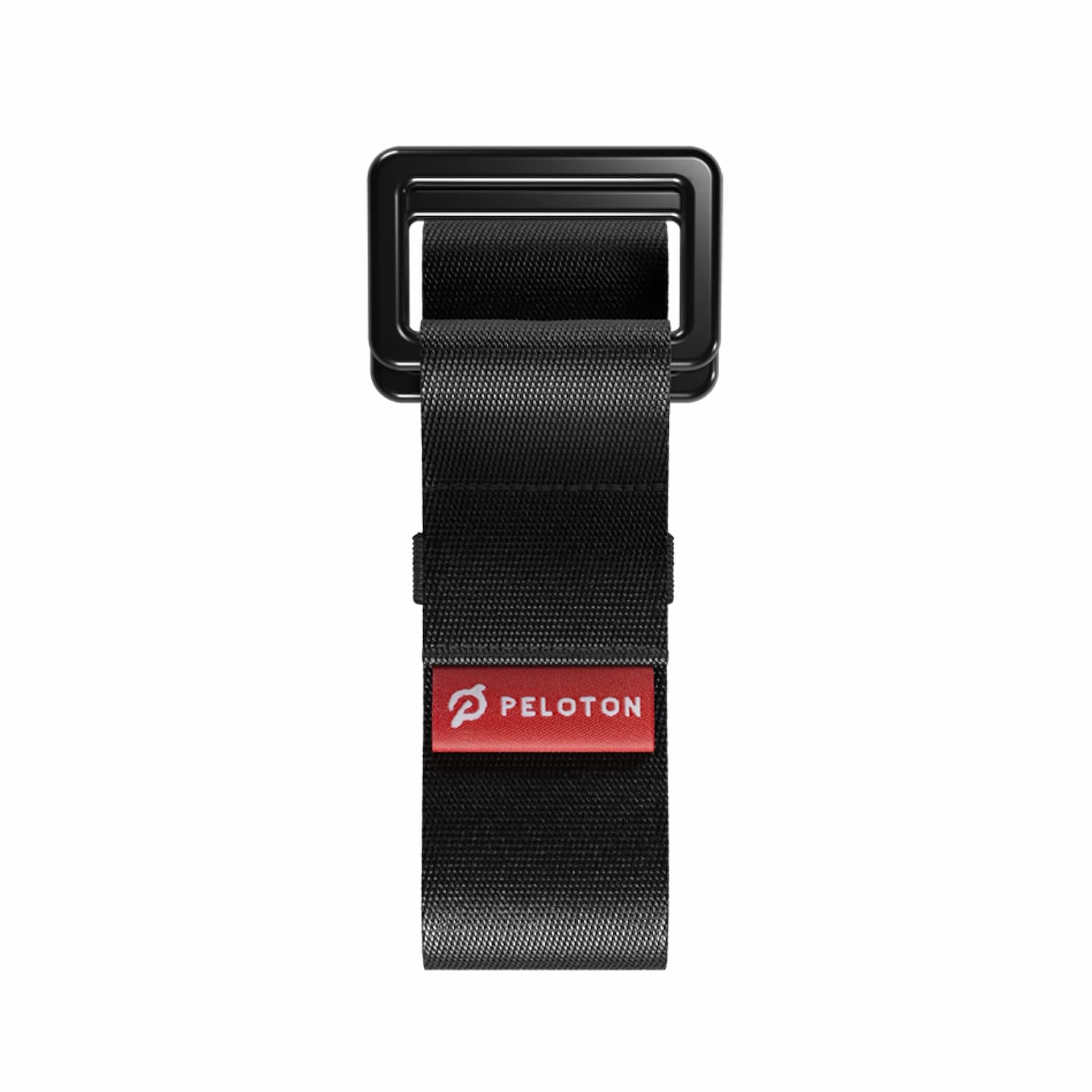
| Pros |
|---|
| The adjustable nylon strap can help you improve your range of motion and feel stronger in any stretch, pose, or bind. |
| The corrosion-resistant zinc alloy rings can resist wear when dropped onto various surfaces, and the tightly woven nylon strap prevents fraying or separation with use. |
| The elastic loop on the Peloton yoga strap helps hold the strap together when folded up, making it easy to store. |
| Cons |
|---|
| Some users may prefer a cotton strap over the polyester strap used in the Peloton Yoga Strap. |
| The price point may be higher than other yoga straps on the market. |
I recommend the Peloton Yoga Strap for those looking for a durable and adjustable yoga strap to add to their routine.
The adjustable feature allows for versatility in a variety of poses, and the corrosion-resistant zinc alloy rings ensure longevity. The only potential drawbacks are the preference for cotton straps and the higher price point.
5. Manduka Yoga Wool Blanket
BEST Peloton yoga blanket for restorative classes
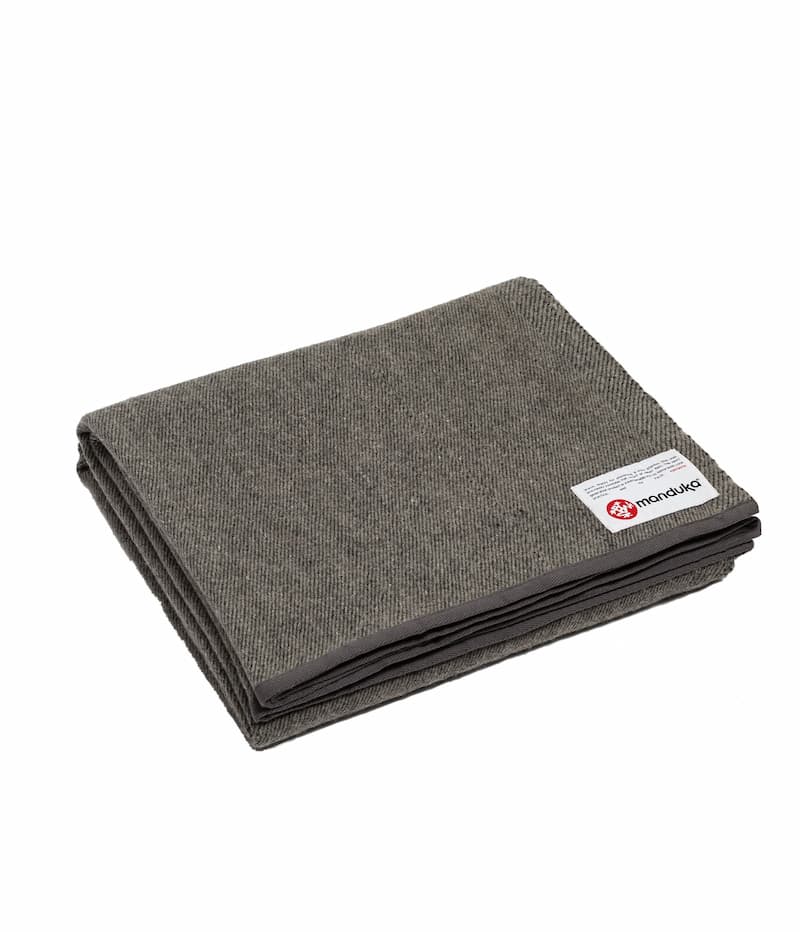
| Pros |
|---|
| Made of 100% recycled fibers |
| Moldable and foldable for support in restorative and dynamic poses |
| Dense weave is stretch-resistant and super soft |
| Cons |
|---|
| A bit itchy for some people |
| Only available in one color |
If you’re looking for a versatile yoga blanket that’s made of eco-friendly materials, the Manduka Yoga Wool Blanket is a great option.
I love that this blanket is made of 75% recycled wool and 25% recycled synthetic fibers, making it a sustainable choice for yoga practitioners who care about the environment. The overlocked edge stitching prevents fraying, ensuring that the blanket will last for years.
The dense weave of the Manduka Yoga Wool Blanket is stretch-resistant, which means that it will maintain its shape even after repeated use. It’s also super soft and plush, yet it resists pilling, even after washing. One thing to keep in mind is that some people find the blanket a bit itchy, especially if they have sensitive skin. Additionally, the blanket is only available in one color (Sediment). Finally, at 3.5 pounds, it may be too heavy to take to yoga class, although it’s perfect for home use.
Overall, I recommend the Manduka Yoga Wool Blanket for anyone who wants a high-quality yoga prop that’s both eco-friendly and versatile.
6. VOILASOPHY Yoga Mat Holder
BEST Peloton yoga mat holder
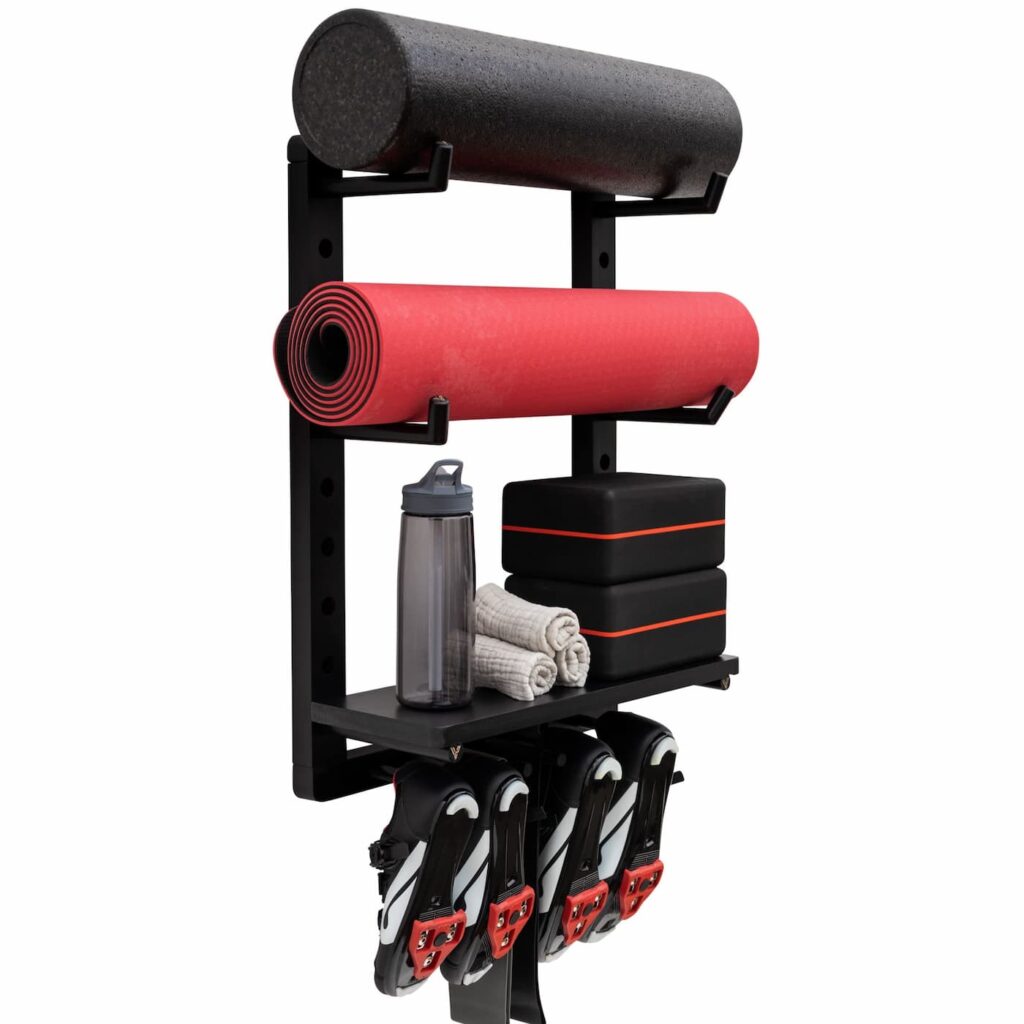
| Pros |
|---|
| The fully adjustable design allows you to customize the rack to fit your specific needs, making it a great peloton shoe holder, foam roller storage, resistance band rack, or versatile gym organization for home gym. |
| The fully adjustable design allows you to customize the rack to fit your specific needs, making it a great peloton shoe holder, foam roller storage, resistance band rack, or versatile gym organization for the home gym. |
| Made from 100% genuine pine wood, the wooden home gym organizer yoga rack includes hand-crafted pegs that can hold upwards of 9 lbs of heavy pro yoga mat. The modern minimalist design elevates any home gym decor or yoga decor. |
| Cons |
|---|
| Some users reported surface scratches on the wood upon arrival, but they were not noticeable once the equipment was installed. |
| The price may be a bit steep for some, especially considering that the wood isn’t finished. |
If you’re looking for a versatile Peloton yoga mat holder that can also store other gym equipment, the VOILASOPHY Yoga Mat Holder Wall Mount Home Gym Storage Rack could be a great option.
Overall, we think the VOILASOPHY Yoga Mat Holder Wall Mount Home Gym Storage Rack is a great investment for anyone looking to organize their home gym or yoga space. The adjustable design and sturdy construction make it a versatile and reliable option for storing all your equipment. Plus, by choosing this yoga wall mount mat holder, you are supporting a tree-planting initiative through the OneTreePlanted nonprofit.
7. Jockey Women’s Activewear Cotton Stretch Capri Legging
BEST Peloton yoga pants
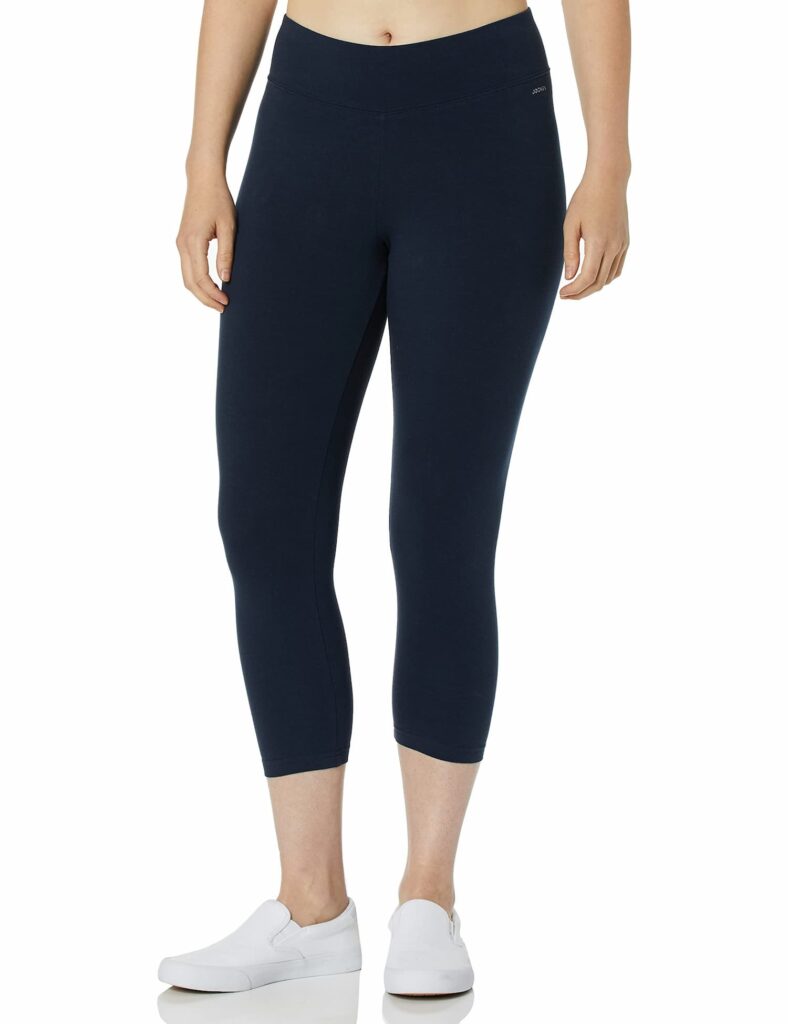
| Pros |
|---|
| The cotton-spandex blend makes these leggings comfortable and stretchy for all your yoga poses. |
| The capri length is perfect for warmer weather or if you prefer to wear shorter leggings. |
| The waistband is comfortable and stays in place during your workout. |
| Cons |
|---|
| These leggings do not have any pockets, which may be inconvenient if you need to carry small items like keys or a phone during your workout. |
| The sizing can run small, so it’s important to check the size chart before purchasing. |
If you’re looking for comfortable and breathable yoga leggings, the Jockey Women’s Activewear Cotton Stretch Capri Legging is a great option.
I recently tried out these leggings during a yoga class and found them to be very comfortable and breathable. The cotton-spandex blend allowed for a full range of motion during all of our yoga poses. The capri length was perfect for the warmer weather, and the waistband stayed in place during our workout.
However, I did notice that there were no pockets in the leggings, which may be inconvenient if you need to carry small items like keys or a phone during your workout. Additionally, we found that the sizing can run small, so it’s important to check the size chart before purchasing. Lastly, some people may find the leggings to be too thin, so it’s important to wear appropriate undergarments.
Overall, if you’re looking for comfortable and breathable yoga leggings, the Jockey Women’s Activewear Cotton Stretch Capri Legging is a great option.
What are the essential accessories for the Peloton Yoga Class?
For Peloton yoga classes, the essential accessories include a yoga mat for stability and comfort, yoga blocks for support in various poses, and straps to aid in stretching and maintaining posture. Additionally, a yoga blanket can be used for extra cushioning and warmth, while a bolster helps in deepening stretches and relaxation. An eye pillow is also beneficial for relaxation and deepening the sense of calm during restorative poses and meditation.
Yoga Mat
A yoga mat is essential for Peloton yoga workouts, providing cushioning and guidance for hand and foot placement, like Lululemon’s mat with 3D ripples for alignment in common poses. Peloton offers a reversible workout mat made of rubber and latex, which doubles as a yoga mat; it’s less grippy and has a uniform thickness, unlike traditional yoga mats which are often thicker and have a grippier surface. While the Peloton mat is suitable for various workouts, for yoga, especially restorative classes, a thicker mat around 8-10 mm is recommended for better support and comfort during prolonged floor poses.
I use a Manduka yoga mat that I purchased from Amazon. Although it’s not inexpensive, it is thick, weighing 2.6 kg (5.7 lbs), and has a thickness of 7mm.
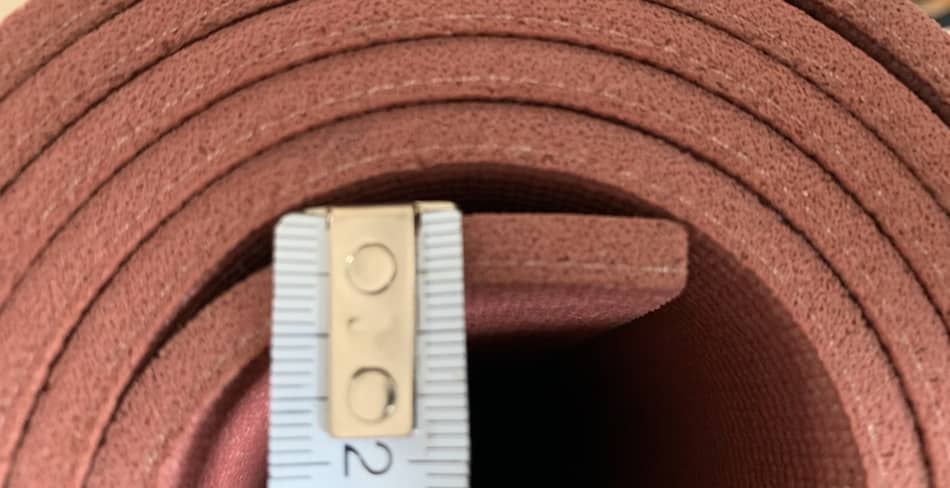
I like to use a thick mat because it doesn’t put so much pressure on my knees. Some of the yoga poses require bending and kneeling. With a thick yoga mat, I have
Yoga Blocks
After years of yoga practice, I’ve realized the importance of using yoga blocks, especially for Peloton yoga classes, as they provide crucial support and enhance pose efficiency. Pros of using yoga blocks include their ability to modify poses to suit your flexibility level, improve alignment, prevent injury, and assist in more advanced poses by offering stability and bringing the ground closer.
They’re made of lightweight foam, which is great for regular use but may lack the support needed for inversion poses or for heavier individuals, as I’ve noticed with my 185lbs during poses like L-sits or handstands. While foam blocks can wear out over time, alternatives like wood or cork blocks offer more support but tend to be heavier and less travel-friendly.
Also, as you can see in the picture, after a few years of using the foamy yoga block, it can start to fall apart and get dirty. This wouldn’t happen with the cork or wooden block.
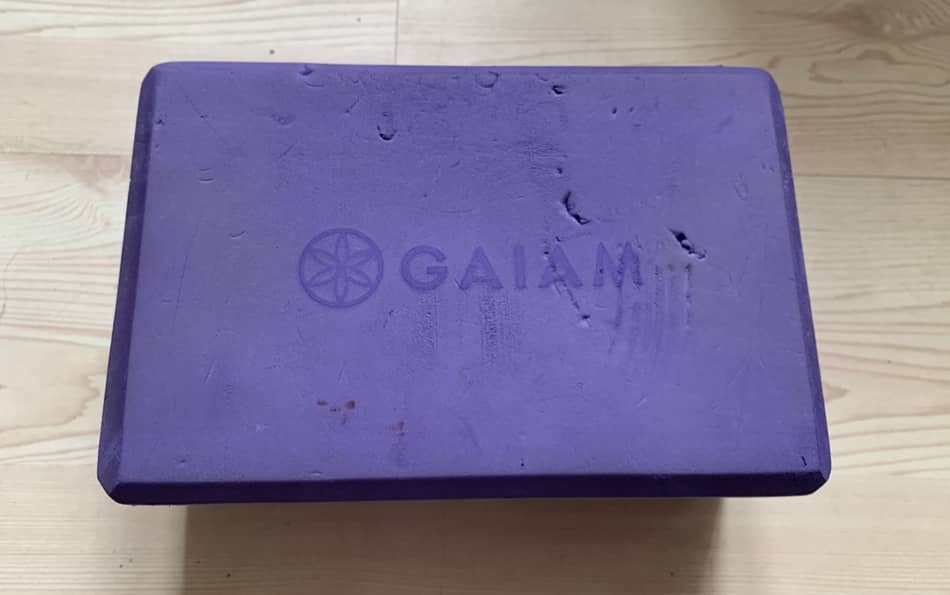
Although some Peloton yoga classes, particularly simpler ones, can be done without blocks, for more dynamic flow or power classes, using blocks is safer and can significantly enhance your practice.
Yoga strap
From my experience, a Peloton yoga strap is super useful for stretching out my hamstrings and opening my hips and shoulders, reaching those tough spots more effectively. While not as essential as yoga blocks, since most Peloton classes don’t require a strap, I find it really handy, especially in morning yoga sessions that push my flexibility. I use my strap in every workout to aid with balance and hip opening, making it a valuable part of my yoga gear.
Peloton yoga strap will help you to stretch out your hamstrings, and open your hips and shoulders. From my experience, having a strap allows for much deeper access to those hidden corners that you wouldn’t normally get.
Here is my yoga strap.

I use my yoga strap for every workout. It helps with balancing poses as well as opening the hips in all directions.
Yoga Bolster
I see a yoga bolster as an oversized yoga block, ideal for those with less flexibility in their hips or hamstrings. It’s great for aiding poses like seated lotus or pigeon and provides excellent support in relaxing yin poses for restorative yoga. I particularly recommend a Peloton yoga bolster for restorative classes, which focus more on relaxation and recovery, perfect for those with an active lifestyle to help speed up recovery and reduce muscle soreness.
Yoga Eye Pillow
I don’t use a yoga eye pillow in Peloton classes, but it’s a great addition, especially for restorative yoga. Placing it on my eyes at the end of a class, the pillow’s gentle weight relaxes my eyes and facial muscles, and blocks out light, enhancing relaxation. Plus, many eye pillows now come with aromatherapy oils, adding a soothing scent to the experience.
Yoga Blanket
I use a yoga blanket mainly in restorative classes or after intense power yoga to get comfortable and relax, especially towards the end of the class. Any cozy blanket works if you don’t have a specific Peloton yoga blanket. Personally, I don’t use it much (unlike my wife who does), as I don’t spend a lot of time in Savasana, but I probably should.
How to choose a Peloton Yoga Mat?
When it comes to choosing the best Peloton yoga mat, there are a few key features to consider. Here are some factors to keep in mind when making your selection.
- Material: The material of the yoga mat and other equipment is an important consideration. Look for high-quality materials that are durable and provide good grip. Some popular options include natural rubber, PVC, and TPE.
- Size: Make sure to choose a yoga mat that is the right size for your body. A mat that is too small can be uncomfortable and make it difficult to perform certain poses. On the other hand, a mat that is too large can be cumbersome and difficult to transport.
- Thickness: The thickness of the yoga mat is another important factor to consider. Thicker mats provide more cushioning and support, which can be helpful for those with joint pain or discomfort. However, thicker mats can also be heavier and less portable.
- Accessories: There are a variety of accessories available for Peloton yoga, including blocks, straps, and bolsters. These accessories can help you deepen your practice and make certain poses more accessible. Consider which accessories would be most helpful for your individual needs.
- Price: Finally, consider your budget when choosing Peloton yoga equipment. While it may be tempting to go for the cheapest option, investing in high-quality equipment can make a big difference in your practice. Look for products that offer a good balance of quality and affordability.
How to Clean Peloton Yoga Mat?
To clean a Peloton yoga mat, use cleaning wipes like Lysol or Clorox, or soapy warm water with a cloth, and clean it at least once a week to maintain grip and prevent odor.
- Gather Materials: Get cleaning wipes (Lysol or Clorox) or prepare soapy warm water and a cloth.
- Wipe Down: Thoroughly wipe the mat with cleaning wipes or soapy cloth.
- Rinse (If Using Soapy Water): If using soapy water, rinse the mat with clean water to remove any soap residue.
- Dry the Mat: Allow the mat to air dry completely, ensuring it doesn’t absorb moisture.
- Regular Cleaning: Clean the mat weekly or bi-weekly, based on your usage and sweat levels.
- Avoid Washing Machines: Do not machine wash the mat; hand wash only if necessary.
- Maintain Grip: Regular cleaning removes dirt and sweat, preserving the mat’s grip and preventing corrosion.
Which yoga blocks are recommended for Peloton yoga sessions?
There are many different types of yoga blocks available on the market, but we recommend choosing a set that is sturdy and made from high-density foam. This will provide you with the support you need during your practice and ensure that your blocks will last for many sessions to come.
Where can I find high-quality yoga blankets compatible with Peloton workouts?
Many retailers offer yoga blankets that are compatible with Peloton workouts, but we recommend looking for blankets that are made from natural fibers such as cotton or wool. These materials are soft, breathable, and provide excellent insulation during restorative poses.
Who are the most popular yoga instructors on the Peloton platform?
Peloton offers a wide range of talented and experienced yoga instructors, each with their unique teaching style. Some of the most popular instructors include Denis Morton, Anna Greenberg, and Aditi Shah.
Does Peloton offer specialized yoga classes such as restorative or chair yoga?
Yes, Peloton offers a variety of specialized yoga classes, including restorative yoga, chair yoga, and prenatal yoga. These classes are designed to help you deepen your practice and provide modifications for those with injuries or physical limitations.
How can I integrate Peloton’s yoga offerings into my existing fitness routine?
Peloton’s yoga classes are designed to be flexible and can easily be integrated into your existing fitness routine. We recommend starting with a few classes per week and gradually increasing the frequency as you become more comfortable with the practice. Additionally, Peloton offers a variety of yoga challenges and programs to help you stay motivated and engaged with your practice.
